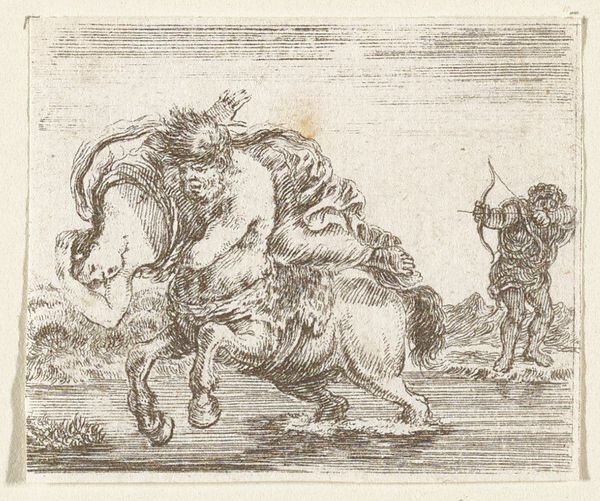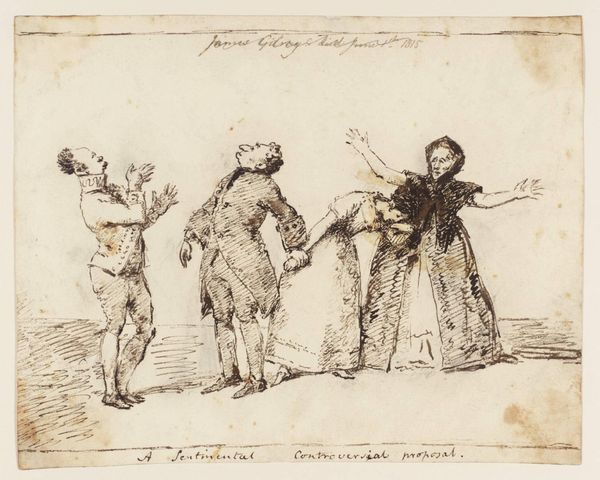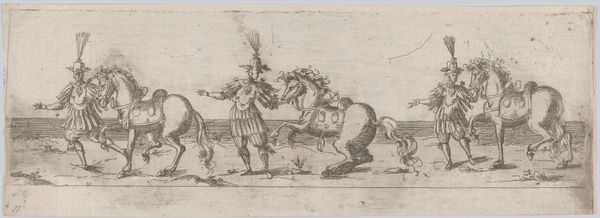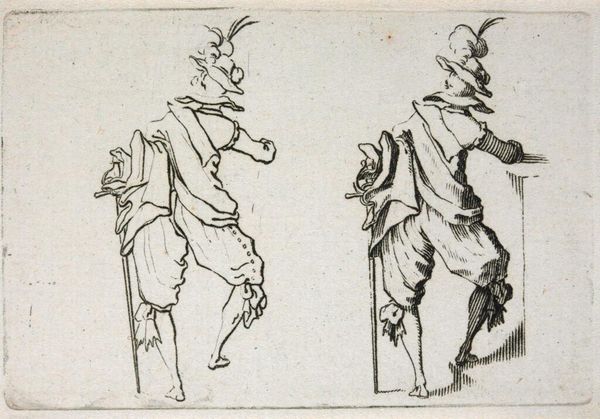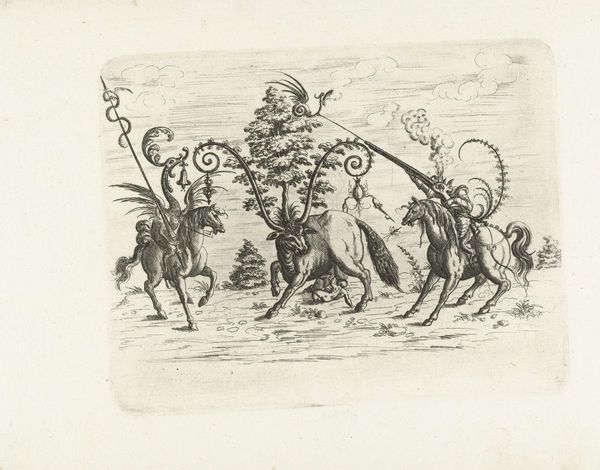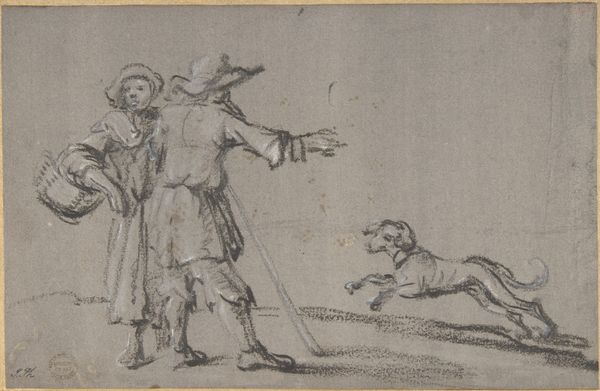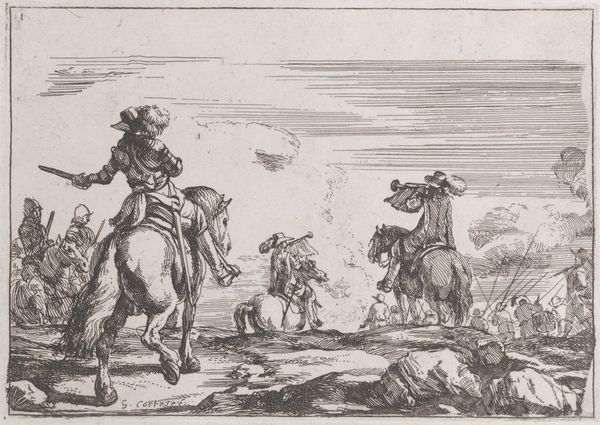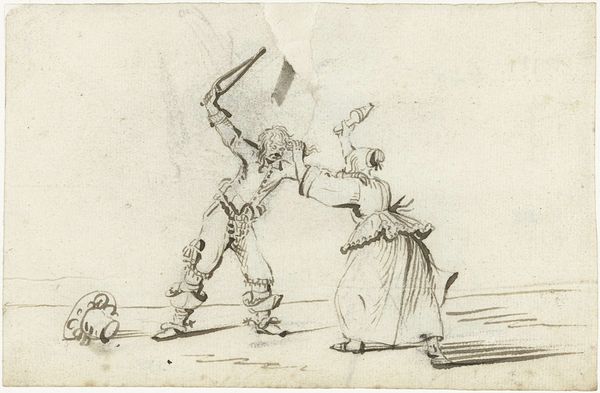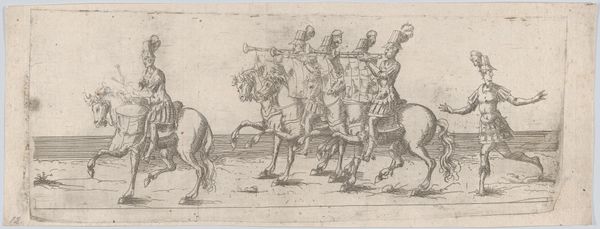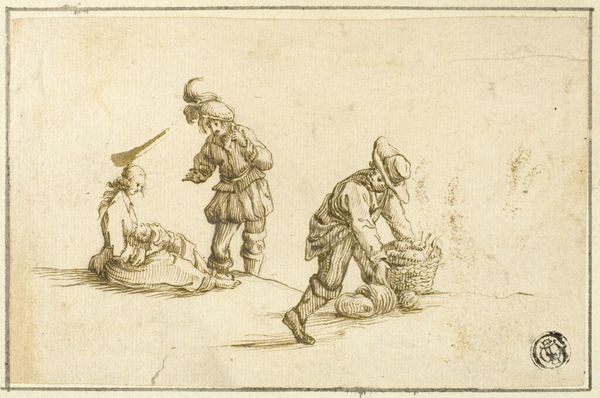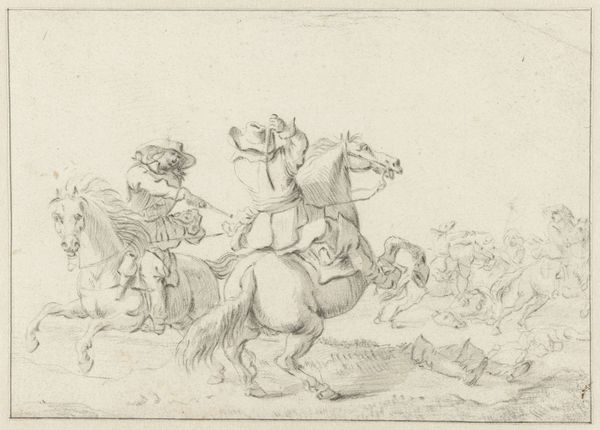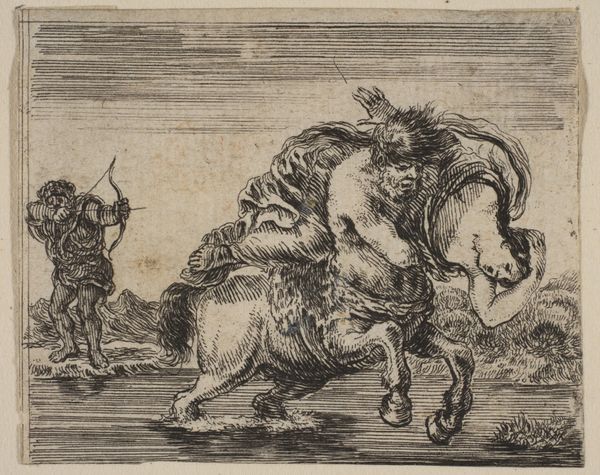
drawing, ink, pen
#
drawing
#
narrative-art
#
pencil sketch
#
landscape
#
figuration
#
ink
#
romanticism
#
pen
Dimensions: height 130 mm, width 181 mm
Copyright: Rijks Museum: Open Domain
Editor: Here we have "Twee schietende ruiters" or "Two Shooting Horsemen" by A. Dufourcq, made sometime between 1800 and 1900. It's a pen and ink drawing. It feels very raw and immediate, capturing movement in such simple lines. What do you see in this piece, particularly in terms of its historical context? Curator: Beyond the dynamism, I see echoes of power structures and social anxieties embedded within the image. This drawing, while seemingly a straightforward depiction of riders, needs to be considered within the context of its creation. Think about the Romantic era – what societal upheaval was occurring then, and how might it manifest? Editor: Well, it was a time of revolution and shifting social orders, wasn’t it? Curator: Exactly. The riders themselves – are they symbols of authority, perhaps remnants of a fading aristocracy clinging to power? Their "shooting" suggests not just skill, but also dominance. And consider the narrative: who are they shooting at, and why? The ambiguity is telling. It raises questions about class, control, and the violence inherent in maintaining the status quo. How do those broad strokes contribute to such implications? Editor: I see what you mean. The loose lines and stark contrast could represent the instability and harshness of the time, right? Curator: Precisely! And consider how the drawing might also engage with early nationalist sentiments. It is essential to understand it as an artwork that both reflects and possibly reinforces cultural narratives about heroism and power. How would that impact the viewers, and who were these viewers? Editor: I never thought about it that way, it adds layers I hadn’t considered before! Thinking about those issues makes it so much more compelling. Curator: Indeed. By situating this drawing within the social and political context of its time, we gain a deeper understanding of its potential meanings and its relationship to broader narratives of power, identity, and conflict.
Comments
No comments
Be the first to comment and join the conversation on the ultimate creative platform.
